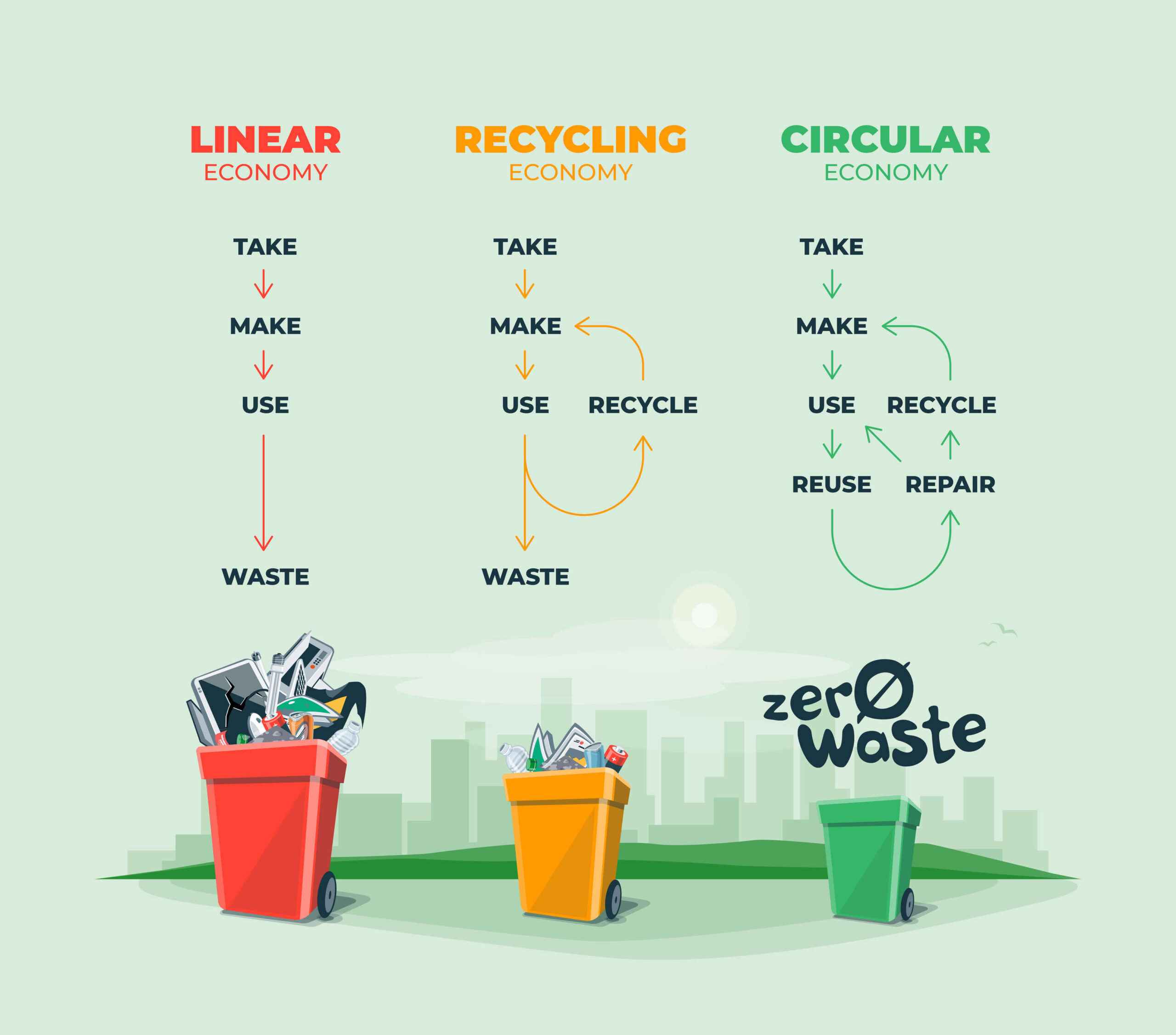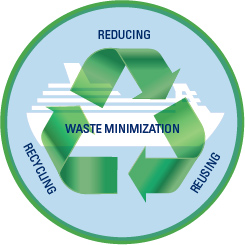The Role of Recycling Lives Services in Supporting Local Communities
The Role of Recycling Lives Services in Supporting Local Communities
Blog Article
Exploring Various Sorts Of Waste in Modern Waste Management Solution
The modern landscape of waste administration includes navigating an intricate array of waste types, each needing specialized handling and disposal approaches to reduce ecological effects. Community strong waste, contaminated materials, electronic waste, and organic waste each present distinct challenges and chances for resource recuperation. Ingenious options such as smart waste bins and waste-to-energy innovations are arising as essential devices in improving effectiveness and sustainability. Comprehending these waste types is vital for promoting public awareness and encouraging energetic engagement in sustainable practices. What methods can successfully resolve these varied kinds of waste while promoting a circular economy?
Metropolitan Strong Waste
Local strong waste, typically referred to as household trash or garbage, encompasses a range of thrown out materials produced by property, business, and institutional resources within a municipality. This waste stream commonly consists of products such as packaging, food scraps, backyard trimmings, paper, plastics, fabrics, and thrown out household goods. The monitoring of metropolitan solid waste is a critical part of urban planning and public wellness, demanding effective collection, transportation, and disposal systems.
Reliable waste monitoring systems are created to reduce ecological influence while making the most of source healing. This typically includes a mix of methods consisting of landfilling, composting, and recycling. Recycling programs target products like paper, glass, metals, and specific plastics, diverting them from landfills and reintroducing them right into the production cycle. Composting natural waste, such as food scraps and backyard trimmings, not just decreases land fill use but additionally creates valuable dirt modifications.
Municipalities have to likewise deal with the financial and logistical challenges related to waste administration. Executing pay-as-you-throw systems, boosting public understanding, and purchasing technology can considerably improve waste diversion prices. By integrating these methods, towns can cultivate lasting communities, decrease greenhouse gas exhausts, and conserve natural sources.
Contaminated Materials

Effective unsafe waste administration includes several crucial steps: recognition, segregation, therapy, and disposal. Identification involves the classification of waste based on its dangerous buildings. Partition guarantees that unsafe products are saved independently from non-hazardous waste to avoid cross-contamination. Treatment techniques, such as chemical neutralization, incineration, and stablizing, are used to decrease the toxicity, volume, or flexibility of the waste. Finally, disposal options, including protected garbage dumps and below ground storage, are chosen to guarantee lasting containment.
Regulative frameworks, such as the Resource Preservation and Recovery Act (RCRA) in the United States, supply standards and standards for harmful waste monitoring. Adherence to these policies, paired with innovations in waste treatment modern technologies, is essential in mitigating the threats connected with unsafe waste.
Electronic Waste
Electronic waste, commonly referred to as e-waste, stands for a quickly expanding difficulty in waste management systems around the world. This sort of waste includes thrown out electronic devices and equipment such as smartphones, computers, tvs, and other digital devices. The quick pace of technical innovation, paired with decreasing product life expectancies and customer demand for the current gadgets, has significantly boosted the quantity of e-waste created annually.
E-waste is particularly problematic because of its complicated structure, typically including hazardous substances like cadmium, lead, and mercury, which position considerable ecological and health dangers otherwise appropriately taken care of. On the other hand, e-waste likewise has beneficial products such as copper, silver, and gold, which can be recouped and reused. The double nature of e-waste-- both beneficial and hazardous-- necessitates specific handling, reusing, and disposal processes.
Reliable e-waste monitoring involves strict governing structures, durable collection systems, and advanced recycling technologies. Public understanding and involvement are vital, This Site as improper disposal methods, such as illegal disposing and casual recycling, exacerbate environmental contamination and carcinogen. Consequently, improving e-waste administration techniques is important for reducing ecological effect and recuperating beneficial resources in a progressively digital world.

Organic Waste
Organic waste, making up kitchen area scraps, yard trimmings, and farming deposits, represents a significant section of the international waste stream. This kind of waste is biodegradable, meaning it can be broken down by microorganisms right into simpler natural substances. Regardless of its possibility for natural disintegration, inappropriate management of organic waste can result in adverse ecological impacts, consisting of the discharge of greenhouse gases such as methane, which contribute to environment adjustment.
Reliable monitoring of organic waste is official statement vital for reducing these environmental influences (recycling lives services). Composting is a widely adopted approach, changing natural waste into nutrient-rich garden compost that can boost dirt health and farming performance. Additionally, anaerobic digestion is an arising technology that converts organic waste into biogas, a sustainable energy source, and digestate, which can be made use of as plant food
Municipalities and waste management entities should execute durable organic waste collection and treatment programs to make the most of the advantages of these procedures. Public education projects can likewise play a pivotal duty in motivating homes and companies to different natural waste from various other sorts of waste. By focusing on the management of organic waste, cultures can lower land fill usage, reduced greenhouse gas discharges, and develop useful byproducts for agricultural use.

Cutting-edge Waste Management
In the realm of waste administration, ingenious techniques are changing just how societies manage their refuse, going for sustainability and efficiency. These developments encompass a series of innovations and methods that boost recycling rates, decrease garbage dump reliance, and lower ecological effect. One popular technology is the execution of clever waste containers equipped with sensing units that check fill degrees and optimize collection courses. This not just decreases gas usage however likewise minimizes greenhouse gas emissions.
One more notable growth is the adoption of waste-to-energy (WtE) innovations. By converting non-recyclable waste right into functional energy through procedures such as incineration and anaerobic food digestion, WtE decreases landfill worry and supplies a sustainable energy resource. Furthermore, developments in chemical reusing enable for the break down of intricate plastics into their initial monomers, allowing the development of brand-new, top notch plastic a knockout post products.
Furthermore, the circular economy design is gaining traction, stressing the style of products and systems that prioritize reusability and source effectiveness. This all natural technique motivates sectors to minimize waste generation from the beginning. Via these innovative strategies, contemporary waste monitoring systems are not only resolving the immediate difficulties of waste disposal but additionally leading the way for a much more lasting future.
Conclusion
A detailed understanding of metropolitan strong waste, unsafe waste, electronic waste, and organic waste, combined with the application of cutting-edge waste monitoring solutions, is essential for alleviating environmental impacts. Integrating modern technologies such as smart waste bins and waste-to-energy systems can improve performance and sustainability. Reliable waste monitoring strategies not only foster source recovery but likewise promote public understanding and participation, inevitably contributing to the advancement of a circular economy.
The modern landscape of waste administration involves browsing a complex array of waste types, each requiring specialized handling and disposal approaches to minimize environmental impacts. Municipal strong waste, hazardous waste, electronic waste, and natural waste each existing unique obstacles and chances for resource healing.Electronic waste, commonly referred to as e-waste, stands for a rapidly expanding obstacle in waste administration systems globally. Through these innovative techniques, contemporary waste administration systems are not only addressing the immediate challenges of waste disposal however also paving the way for a more lasting future.
A thorough understanding of local solid waste, harmful waste, electronic waste, and natural waste, coupled with the execution of cutting-edge waste management solutions, is vital for reducing environmental influences. (recycling lives services)
Report this page